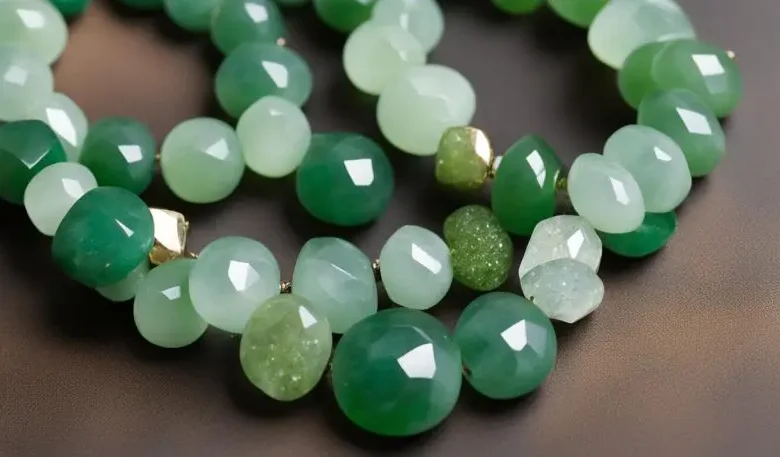Gem Stones: Nature’s Jewels Unearthed

Introduction:
In the realm of Earth’s treasures, gemstones stand as radiant testaments to the beauty and complexity of nature’s craftsmanship. These captivating gems, formed over millennia in the depths of the Earth, have enraptured civilizations with their dazzling hues, unique formations, and profound symbolism. Join us on a journey into the world of gem stones, exploring their geological origins, cultural significance, and the enchanting stories each stone carries.
The Geological Ballet of Gem Formation:
Gemstones, often referred to as nature’s jewels, undergo a captivating geological journey before they emerge as the sparkling gems we adore. The process begins deep within the Earth, where minerals are subjected to intense heat and pressure, resulting in the formation of crystals. The conditions under which these crystals develop determine the unique characteristics and properties of each gemstone, creating a geological ballet beneath the Earth’s surface.
Diverse Palette of Gemstone Varieties:
The world of gemstones is a kaleidoscope of colors, textures, and properties, each variety offering a distinct visual and metaphysical experience. Diamonds, with their brilliant sparkle and unparalleled hardness, symbolize enduring love and strength. Rubies, with their intense red hues, have been revered for their passion and vitality. Sapphires, in shades ranging from celestial blue to vivid pink, evoke notions of wisdom and royalty. From emeralds to opals, amethysts to pearls, the diversity of gemstones mirrors the rich tapestry of nature’s artistry.
The Four Cs: Evaluating Gemstone Quality:
Understanding the quality of gemstones involves assessing them through the four Cs: cut, color, clarity, and carat weight. The precision of the cut determines how light interacts with the stone, influencing its brilliance. The color of a gemstone, ranging from the deep blues of sapphires to the vibrant greens of emeralds, contributes to its aesthetic appeal. Clarity refers to the presence of internal flaws or inclusions, while carat weight signifies the gemstone’s size. This grading system provides a standardized approach to appreciating and valuing gemstones.
Cultural Significance and Symbolism:
Gemstones have held profound cultural significance throughout history, woven into the fabric of myths, rituals, and societal customs. Each culture attributes unique meanings to specific gemstones, turning them into symbols of power, protection, and spirituality. For instance, the deep blue lapis lazuli was revered by ancient Egyptians as a symbol of royalty and cosmic connection. In Hindu culture, the ruby holds immense significance as a symbol of passion and prosperity. The cultural symbolism attached to gemstones transcends time, connecting us with the collective narratives of humanity.
Birthstones: Personalized Tokens of Identity:
The concept of birthstones further enriches the personal connection individuals feel with gemstones. Assigned to each month of the year, birthstones are believed to bring good fortune, protection, and unique energies to those born during that time. Whether it’s the fiery red of garnets for January or the serene blue of aquamarines for March, birthstones become personal tokens, forging a connection between individuals and the gems associated with their birth months.
Gemstone Healing and Metaphysical Properties:
Beyond their visual appeal, gemstones are believed by some to possess healing and metaphysical properties. This belief dates back to ancient civilizations, where gemstones were thought to influence various aspects of well-being. Amethyst, renowned for its calming properties, is said to promote balance and clarity of mind. Rose quartz, with its gentle pink hue, is associated with love and emotional healing. While these beliefs are subjective, they add an intriguing layer to the mystique of gemstones.
Diamonds: Timeless Symbols of Love and Endurance:
Diamonds, with their unmatched brilliance and durability, have become timeless symbols of love and endurance. As the hardest known substance, diamonds endure through the ages, making them apt representations of lasting commitments. The tradition of diamond engagement rings gained prominence in the 20th century, forever cementing diamonds as emblems of enduring love and commitment.
Pearls: Nature’s Elegance from the Depths:
Pearls, unique among gemstones, originate from the depths of the sea. Formed within mollusks, pearls symbolize purity and elegance. Cultured pearls, cultivated with human intervention, have allowed for the production of exquisite pearl jewelry, ranging from classic strands to contemporary designs. The luminescent beauty of pearls continues to captivate, offering a testament to the treasures hidden beneath ocean waves.
Emeralds: Green Chronicles of History and Royalty:
Emeralds, with their lush green tones, have a rich history intertwined with royalty and mystique. Cleopatra, the legendary Egyptian queen, was famously enamored with emeralds, considering them a symbol of rebirth and eternal life. Throughout history, emeralds have adorned the crowns and jewelry of royalty, representing not only wealth but also the verdant essence of life.
Lab-Grown Gemstones: Ethical and Sustainable Alternatives:
In response to concerns about ethical mining practices and environmental impact, lab-grown gemstones have emerged as ethical and sustainable alternatives. These stones, cultivated in controlled environments, mirror the chemical composition and physical properties of their natural counterparts. Lab-grown gemstones offer consumers an environmentally conscious choice without compromising on the beauty and quality traditionally associated with gems.
Gemstones in Modern Jewelry Trends:
Contemporary jewelry design reflects evolving tastes and lifestyles, incorporating gemstones in innovative ways. From minimalist settings that highlight the purity of a single gem to avant-garde designs that blend various stones for a dynamic visual impact, modern jewelry trends embrace the diversity of gemstones. Ethical sourcing, custom designs, and a focus on individual expression are shaping the landscape of gemstone jewelry in the 21st century.
Preserving the Legacy: Sustainable Practices and Conservation:
As the demand for gemstones continues to grow, there is a growing emphasis on sustainable practices and conservation. Organizations and initiatives, such as the Responsible Jewellery Council (RJC) and ethical sourcing certifications, aim to promote fair labor practices, minimize environmental impact, and ensure the longevity of gemstone resources. By adopting responsible practices, the industry seeks to balance the beauty of gemstones with the imperative of preserving the natural world.
Conclusion:
Gemstones, with their mesmerizing beauty and rich histories, remain timeless symbols of Earth’s treasures. From the fiery brilliance of diamonds to the ethereal glow of pearls, each gemstone tells a unique story shaped by nature’s intricate processes and humanity’s cultural narratives. As we continue to explore the enchanting world of gem stones, we discover not only the geological wonders beneath the Earth’s surface but also the enduring allure that has captivated hearts and minds across civilizations. In every facet and hue, gemstones embody the beauty, diversity, and profound symbolism that make them nature’s most exquisite jewels.




